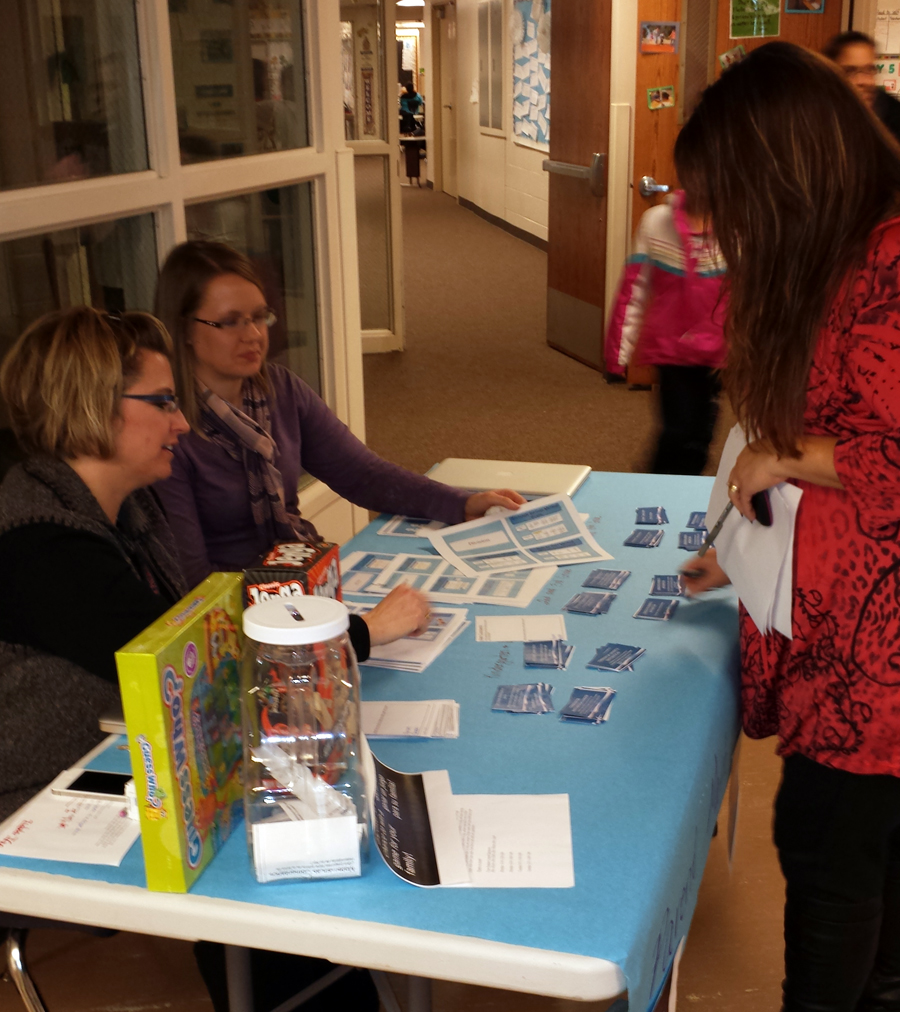
Walking into Knickrehm Elementary School in Grand Island on parent-teacher conference takes parents or guardians right past a strategically placed table. Primarily Math teachers Angie Roby and Katie Keasling decided to make the most of the presence of parents on parent-teacher conference night and set up an eye-catching table designed to share what the students at their school are learning in math.
As every math teacher knows, it can sometimes be difficult for parents to understand what students are doing in their math classrooms, particularly if the teaching strategies being employed are non-traditional. The elementary mathematics curriculum, Math Expressions, contains some teaching strategies that are new to many parents. Since this concern spans all grade levels, Roby and Keasling chose to address this issue in a way that would allow them to reach as many parents as possible: by setting up a math table on parent-teacher conference night.
"We are visiting with parents as they go by," said Roby and Keasling. "We are strategically placed in the hall so no matter the grade level ALL parents that attend conferences have to pass through us!"
The pair designed "business cards" for each grade level that contain information about what children in that grade have been and will be learning. The pair asked the classroom teachers what information they would like to include on the card. For example, the first grade card informs that the students have been working on double digit addition and will begin double digit subtraction. But they don’t stop there. Roby and Keasling also created a handout for grade levels K-1, 2-3 and 4-5 by adapting some of the presentation materials already developed by Math Expressions.
"This would allow parents to make that connection to the curriculum and what their children are working on at home," said Roby. As an example, the information for grades 2-3 includes picture examples of different addition and subtraction strategies.
But communication is a two-way street, so Roby and Keasling also created comment or question cards that have a space where parents can write a question or note to their child's teacher. One of the prompts on the question and comment card was "What questions do you have about helping your child with their math homework?" As a reward for stopping by the math table and completing a card, all comment cards (with their name included) were placed in a jar from which two names were drawn at the end of the evening. These families were the winners of two games that were on the table. As Keasling said, "A little free leverage never hurts!"
When asked whether the math table was a success, Keasling replied, "It went all right. I know there were a couple parents that surprised me with saying that math isn't a problem at home. Some said they don't understand it themselves so they allow help from another parent or sibling. There were also the parents that didn't care for any of the handouts and did not write on the comment cards. But of course there were also parents who were appreciative of what we were offering them."
Keasling added, "One thing that is worth noting is that we have a large diverse population, so we knew a significant problem might be the language barrier. We had Spanish and English copies of all handouts available. Although something we'd do differently might be to have someone available that speaks Spanish; we could only hand the papers to the non-English speaking parents and hope they could understand it from there."